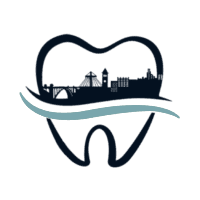Many general dentists often work within their specialties to provide patients with more personalized treatments. One of the specialties that have been making rounds among dentists is short-term orthodontics, which focuses on combining both cosmetic dentistry and orthodontics into one setting. Short-term orthodontics refers to using minimally invasive methods of tooth alignment with a cosmetic approach, providing a solid balance of aesthetics and health to improve the patient’s smile. So, let’s explore what this term’s all about and see what you can do to make your smile healthy and even more beautiful!
Short-Term Orthodontics: Alignments and Aesthetics
Short-term orthodontics refers to how orthodontists and other specialists use braces, ligatures, and other devices for cosmetically driven solutions. Meaning that if patients want straighter teeth that are more cosmetically appealing, then short-term orthodontics can appeal to those needs by providing solutions specifically designed for their circumstances. For instance, patients wanting straighter teeth in a shorter time frame can see the results of their work within as little as six months under the guidance of their dentist, eliminating the financial costs associated with their treatments and improving their aesthetic appearance.
In order for patients to qualify for this type of treatment, patients would need to have a stable, healthy jawline and minimal signs of misalignment. However, patients who qualify would be able to correct their tooth alignment and facial symmetry easily. Through short-term orthodontics, patients can treat both their alignment issues and aesthetic concerns within one treatment, with a shorter timeframe for treatment results.
Examples of Short-Term Orthodontics Used Today
While the term isn’t commonly referred to in today’s dental practices, some dentists, cosmetic dentists, and orthodontists work with the treatments that short-term orthodontics provides to treat their patient’s teeth. Some of these treatments most often used in dental practices include:
- Tooth-Colored Fixed Braces: Tooth-colored fixed braces provide a permanent solution to minor signs of misalignment by blending the braces with the tooth’s natural shade. Doing so makes way for healthy retention and high amounts of aesthetics. These braces are less noticeable, offer the same retention as regular braces, and often have a shorter treatment timeframe than traditional braces.
- Sectional Lingual Braces: These braces, while less known, offer a form of retention that supports tooth movement using the front teeth. Sectional lingual braces don’t require expensive or long-term work on the front teeth and can be used to help maintain the patient’s aesthetics during their treatment time frame.
- Six-Month Clear Aligners: While considered a popular choice among patients, clear aligners are excellent at straightening mildly crooked teeth without interfering with aesthetics. Normally, these aligners are worn from six months to two years, can be easily removed, and can sometimes be used as a prep stage for permanent braces.
- Six-Month Brace Wires: These braces act similarly to clear aligners, but instead of using plastic, these use thin, translucent wires to provide safe alignment for patients, offering the same amount of retention as traditional braces.
For more information about these types of treatments and whether you qualify, speak with your orthodontist or cosmetic dentist to learn more.



